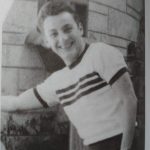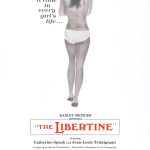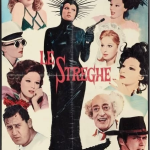GENE BILBREW REVEALED: The Unsung Legacy of a Fetish Art Pioneer (African American Artists Series) is the latest in Richard Pérez Seves’ series of biographies of fetish artists and publishers.
Pérez Seves’ previous work on Eric Stanton gave an interesting picture of a man, his work and his time. However, the author has less to work with when it comes to Gene Bilbrew.
Arguably, Bilbrew and Stanton defined the American fetish style in the 1950s and 1960s, drawing and painting numerous comic strips, digest magazines and pulp covers for semi-underground publishers. They both went to Cartoonists & Illustrators School in NYC (along with Steve Ditko). They maintained a rivalry that was not always friendly, competing for work from a limited number of publishers.
While Stanton left behind a legacy of creator-owned work, family members, friends and interviews, Bilbrew was a cipher, an African-American in a business and a subculture dominated by whites and Jews.
Even why Bilbrew started doing fetish art is a mystery. Stanton was interested in bondage, fighting women and the like from adolescence, a fan who turned pro, but there’s no evidence Bilbrew had any interest in kink or graphic arts. As a young man, Bilbrew enjoyed some success as a singer in several vocal groups under the name “Gene Price”, and married another singer known as Rosita Davis. His career and marriage came to an end in the early 1950s. There’s no hard evidence on how or why Bilbrew went into art at this point, even working for comics great Wil Eisner. As Stanton recalled, he spotted Bilbrew working on a bondage scene illustration on his desk, and that led to Stanton introducing him to the Klaws and the bizarre underground.
Bilbrew didn’t stay within the Klaws’ strict rules about nudity and explicit sexuality in the work they published. The Klaws ordered Stanton to censor Bilbrew’s work, starting a rift in their relationship. Bilbrew moved into the orbit of other underground publishers such as Edward Mishkin, working under aliases like “Eneg”, “Van Rod” or “Bondy”.
One of the few direct quotes from Bilbrew about his work came from when he was called as a witness in one of Mishkin’s trials for obscenity.
Bilbrew: … I, more or less, learn the psychology of the type of work, what’s appealing–
Justice Gassman: But you didn’t read the book. How did you know that the cover was going to fit the book?
Bilbrew: Actually speaking, I didn’t.
Justice Gassman: You just made a cover without knowing whether it fitted the book or it didn’t fit the book?
Bilbrew: That’s the way I have been working.
Pg.100
In the 1970s, changes in the industry combined with Bilbrew’s alcohol and drug use left him in a sorry state, with declining work and living in a small room in the back of one of Mishkin’s businesses. The exact cause and location of his death in 1974 is not clear, and he left behind no obituary or grave marker. Stanton’s widow, Britt, says Eric wept when he learned of Gene’s death.

Was Bilbrew like Stanton, whose kinks drove his art? Or did Bilbrew just happen to find a field of art that would offer him better work than he, a black man, would get in other businesses? These questions will probably remained unanswered.




[…] for other artists and publishers and writers of this era, like John “Willie” Coutts or Gene “Eneg” Bilbrew. This book gives us a window into the roots of the modern fetish and BDSM […]
[…] Gene Bilbrew, also known as “Eneg” or “Bondy”, was one of the classic American fetish artists of the 1960s, illustrating many magazines and pulp novel covers. See my review of his biography […]